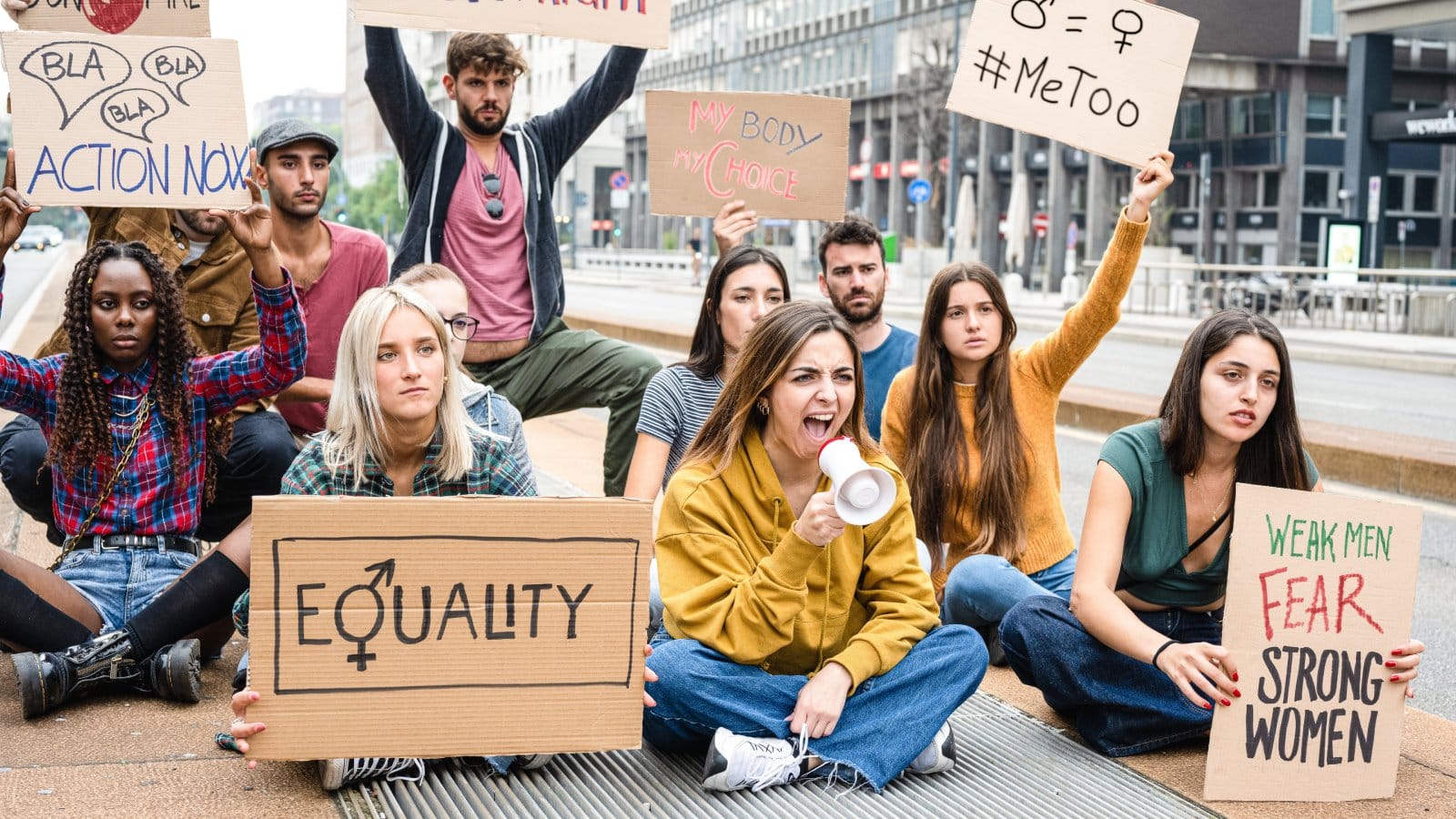Far-right extremists have shed their fear and gained a public platform. Their toxic ideologies are now openly celebrated, creating a more divided and hostile nation. Trump didn’t just empower the far-right; he made their hate-filled ideas mainstream. So, how did we get to this point?
1. The Trump Presidency

Donald Trump’s presidency marked a significant shift in American politics, providing a platform and legitimization for far-right ideologies. His rhetoric often mirrored far-right themes, which helped normalize these views in the public discourse, making it easier for such groups to express themselves openly.
2. Rise of Social Media

Platforms like Twitter and Facebook have allowed far-right groups to bypass traditional media gatekeepers, spreading their message directly to followers. This direct line of communication has not only amplified their reach but also solidified their presence in the digital space.
3. Mainstream Media Coverage

Far-right movements often receive extensive media coverage, even when being criticized, which helps to further publicize their message. This coverage, even if negative, can validate their presence in the national dialogue, emboldening their activities.
4. Political Polarization

The United States has experienced deepening political divisions, which has created an environment where more extreme political views can flourish. This polarization often results in a lack of middle ground, pushing individuals towards more radical ideologies.
5. Populist Movements Globally

The rise of populist leaders around the world has mirrored and encouraged the growth of far-right ideologies in the U.S. Figures like Brazil’s Jair Bolsonaro and Hungary’s Viktor Orban have had similar effects in their countries, creating a sense of a global far-right resurgence.
6. Echo Chambers and Online Radicalization

Online platforms can act as echo chambers that reinforce and radicalize beliefs. Algorithms designed to increase engagement often promote more extreme content, which can progressively radicalize users or validate their existing beliefs.
7. Distrust in Institutions

There is a growing distrust in traditional institutions, including the media, academia, and the government, among conservative circles. This distrust is often fueled by conspiracy theories that are prevalent within far-right groups, further detaching their followers from mainstream narratives.
8. Reaction to Cultural Shifts

As social norms and cultural values evolve, particularly around issues like race, gender, and sexuality, some groups feel alienated and respond by clinging more strongly to conservative or reactionary ideologies. This reaction can manifest in increased vocal support for far-right ideologies that promise a return to “traditional” values.
9. Effective Use of Propaganda

Far-right groups have become adept at using propaganda to craft compelling narratives that appeal to fears and prejudices. This messaging is often simple, direct, and emotionally charged, making it effective for recruiting and radicalizing followers.
10. Financial Backing

Some far-right groups receive significant financial backing from wealthy donors who share their ideology. This funding helps sustain their operations and increases their ability to organize, campaign, and spread their message.
11. Legislative Success

Far-right groups have seen legislative successes at local and state levels, which emboldens them further. These successes can legitimize their views and encourage more outspoken advocacy and policy influence.
12. Cultural Warriors

Prominent cultural figures and influencers within conservative circles often champion far-right causes, lending credibility and a sense of urgency to their agendas. This endorsement helps mobilize grassroots support and gives these ideologies a foothold in popular culture.
13. Backlash Against Globalization

A significant portion of the far-right’s discourse centers around a backlash against globalization, which they blame for economic disenfranchisement and cultural dilution. This narrative resonates with individuals feeling left behind by global economic changes.
14. Increased Organizational Capacity

Far-right groups have increasingly professionalized and organized their structures, adopting more sophisticated methods of communication and campaigning. This organizational capacity allows them to mobilize quickly and operate more effectively.
15. Court Victories

Legal victories in courts, especially around issues like free speech and gun rights, have emboldened far-right groups. These victories often set precedents that can be used to further their cause and challenge opposition.
16. Sympathetic Political Figures

The presence of sympathetic figures in significant political positions can provide implicit or explicit support for far-right ideologies. This support can manifest in policy-making, rhetoric, or the blocking of legislation that opposes their views.
17. Frustration With Economic Inequality

Economic inequality, often exacerbated by fiscal policies perceived to favor the wealthy, fuels discontent and resentment. Far-right groups exploit these feelings, presenting themselves as champions of the “forgotten” middle and lower classes.
18. Fear of Demographic Changes

The perceived threat from demographic changes drives support for far-right ideologies. Fear of losing cultural or economic dominance can push individuals towards groups that promise to restore or maintain the status quo.
19. Nationalistic Sentiments

Rising nationalistic sentiments encourage the rejection of multiculturalism and open borders. Far-right groups use nationalism to rally support and demonize outsiders, which resonates with those who feel their national identity is under threat.
20. Weak Opposition

In some cases, the inability of centrist and left-leaning groups to effectively counter far-right narratives allows these ideologies to dominate certain political and social discussions. This lack of effective opposition can give the far-right free reign to spread their ideologies unchallenged.
Finding the Root Cause

Understanding these factors is crucial for addressing the rise of far-right movements and mitigating their impact on society. Recognizing and addressing the underlying causes that fuel their growth is essential for fostering a more inclusive and tolerant political landscape.
21 Ignorant Lies About Americans the Rest of the World Claims Are True

Americans are often the subject of wild assumptions and exaggerated stereotypes. Are these misconceptions affecting how the world views the average American? 21 Ignorant Lies About Americans the Rest of the World Claims Are True
Flawed Gender Tests: Olympic Committee Sends Plea to Boxing Officials

The International Olympic Committee has declared old boxing gender tests as flawed and illegitimate. This has arisen amid discussions regarding gender in Olympic female boxing matches. Flawed Gender Tests: Olympic Committee Sends Plea to Boxing Officials
Social Security Sham: 18 States Slashing Benefits

When you think about retiring, you might picture relaxing and traveling during your golden years. Social Security benefits help with this, but taxes can change depending on where you live. In some states, you might end up paying more taxes on your benefits. Let’s check out the 18 states where retirees face higher taxes on their Social Security benefits. It’s important to know so you can plan ahead and make the most of your retirement savings. Social Security Sham: 18 States Slashing Benefits
Featured Image Credit: Shutterstock / Nicole Glass Photography.
The images used are for illustrative purposes only and may not represent the actual people or places mentioned in the article.
For transparency, this content was partly developed with AI assistance and carefully curated by an experienced editor to be informative and ensure accuracy.

